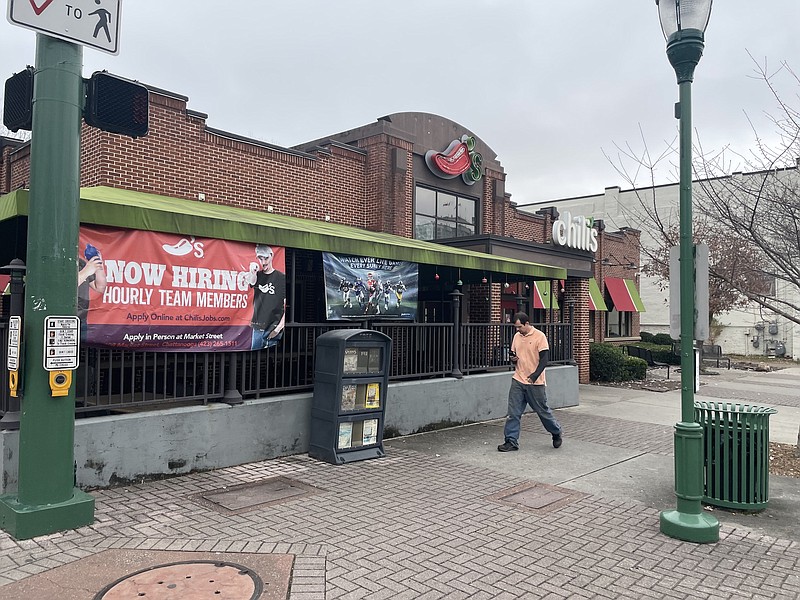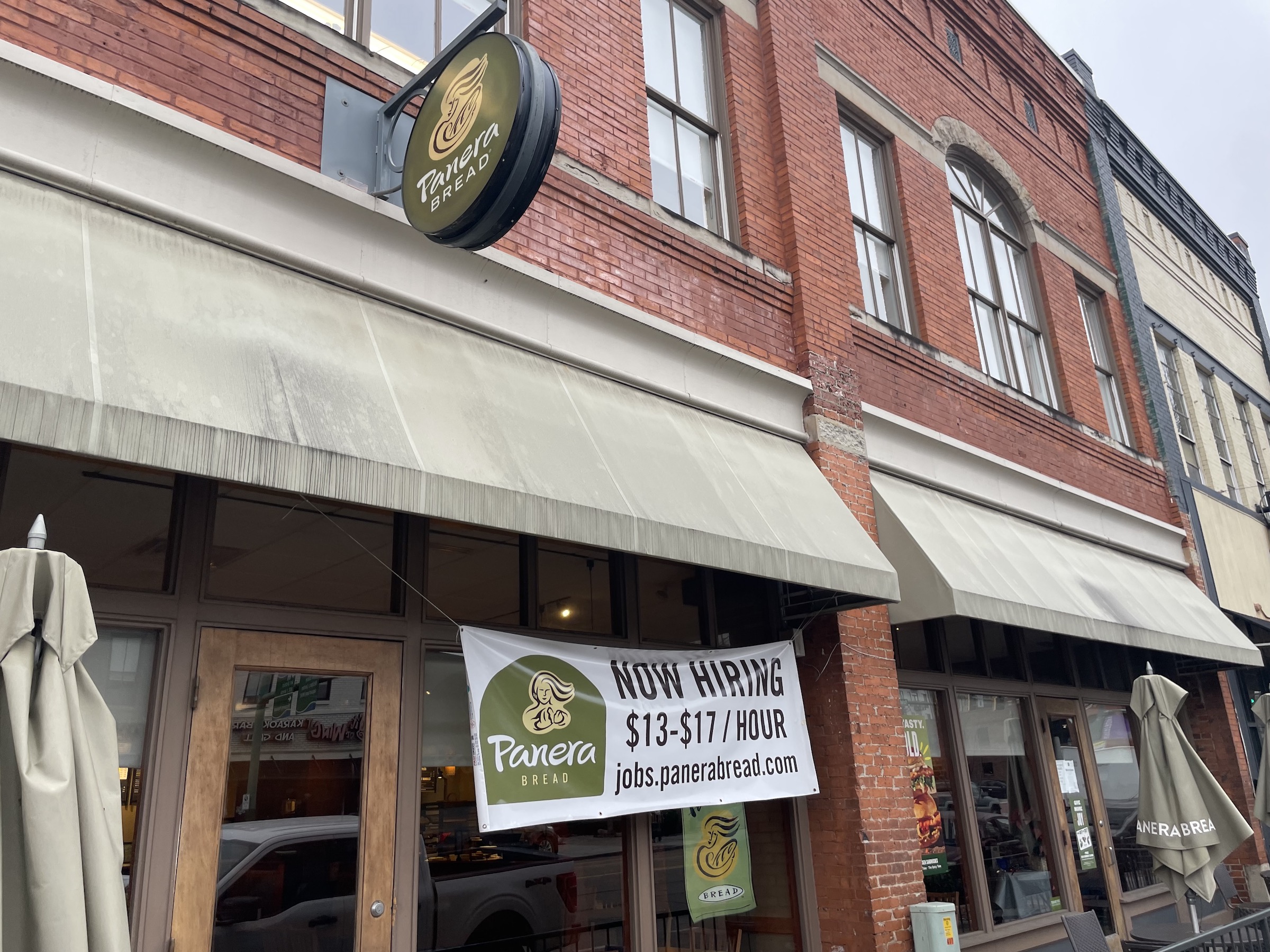Chattanooga's jobless rate declined last month as holiday hiring pushed unemployment in the six-county metropolitan area down two-tenths of a percent to 3.1%, the Tennessee Department of Labor and Workforce Development reported Thursday.
Unemployment in Hamilton County and the three primary bedroom counties for Chattanooga in North Georgia -- Dade, Catoosa and Walker -- all had jobless rates in November below both the state and national averages.
But in most of the other neighboring rural counties around Chattanooga, the unemployment rate was above the U.S. rate of 3.3% and Tennessee's rate of 3.4% for November.
Bledsoe County's 5.3% jobless rate last month was the highest among all 95 counties in Tennessee. To the south, the 3.6% jobless rate in the Dalton area was the highest jobless rate in November among Georgia's 14 metropolitan areas even though Dalton's unemployment rate fell last month from the 4.4% rate in the previous month.
As the carpet capital of the world, Dalton's economy is tied to the floor covering industry that is being hit by a slowdown in construction and remodeling activity as interest rates rise.
Dalton employers had 1,295 fewer workers on their payroll than they did a year ago.
Across all of Georgia and Tennessee, employment continued to grow even as the Federal Reserve Board continues to tighten its monetary policy and drive up interest rates. But the pace of new hiring is slowing.
"We are seeing job numbers continue to rise across the state as Georgians secure employment," Georgia Labor Commissioner Mark Butler said in a report Thursday. "Unemployment rates also dropped in regions throughout Georgia in November as we entered the holiday employment period."
In a year-end economic forecast issued last week, economists at the University of Tennessee in Knoxville predicted that unemployment will increase across Tennessee next year but the state should avoid a recessionary decline in output expected for the country as a whole.
"We are more optimistic for the Tennessee economy as more people have moved to the state in recent years, which has provided a boost to economic growth," Larry Kessler, research associate professor at the UT Boyd Center and project director for the 2023 Economic Report to the Governor of the State of Tennessee, said in a report last week.
Slower economic growth in Tennessee will impact the labor market, however. Job growth is projected to slow from 3.9% in 2022 to 1% in 2023. This is still more favorable than the national outlook, which UT economists expect will show no growth over the next year.
"We are fortunate as a state to be facing historic levels of economic growth while also maintaining low levels of unemployment, and I am confident that Tennessee's business climate will continue to attract companies that are seeking a state with fiscal stability," Stuart McWhorter, commissioner of the Tennessee Department of Economic and Community Development, said in a statement last week. "Our pipeline is strong as we head into 2023, and Tennessee remains committed to recruiting, training and retaining a robust workforce to meet future employment needs."
Chattanooga's jobless rate reached a historic low of 2.8% this spring and has remained below the 4% level coming out of the pandemic.
Separately on Thursday, the U.S. Department of Labor reported that applications for jobless claims for the week ending Dec. 17 inched up by 2,000 to 216,000 from the previous week's 214,000. But the four-week moving average of claims, which smooths out some of the week-to-week swings, fell by 6,250 to 221,750.
Nationwide, the labor department counts nearly two jobs for every unemployed person, and last month U.S. employers added 263,000 jobs.
On Thursday, Tennessee career centers listed 362,635 job openings across the state, or more than three jobs for each of the 108,251 Tennesseans counted as unemployed last month. Not all of the job openings match the skills of those without jobs, however.
Jobless in November
Across the Chattanooga area, only a handful of counties had nonseasonally adjusted jobless rates last month that were still below the U.S. average of 3.4%. But jobless rates in November rose in only two of the 19 area counties.
— Catoosa in Georgia, 2.4%, down from 2.6%% in October.
— Dade in Georgia, 2.5%, down from 2.7% in October.
— Walker in Georgia, 2.7%, down from 2.9% in October.
— Hamilton, 3.2%, down from 3.5% in October.
— Coffee, 3.3%, down from 3.4% in October.
— Franklin, 3.4%, unchanged from October.
— Whitfield in Georgia, 3.5%, down from 4.4% in October.
— Bradley, 3.5%, unchanged from October.
— Marion, 3.6%, down from 3.8% in October.
— Polk, 3.7%, up from 3.6% in October.
— Chattoooga in Georgia, 3.7%, down from 3.9% in October.
— Sequatchie, 3.8%, down from 4% in October.
— Murray in Georgia, 3.8%, down from 4.3% in October.
— McMinn, 4.1%, down from 4.3% in October.
— Meigs, 4.1%, down from 4.4% in October.
— Rhea, 4.2%, down from 4.4% in October.
— Grundy, 4.2%, down from 4.3% in October.
— Van Buren, 4.4%, up from 4.2% in October.
— Bledsoe, 5.3%, unchanged from October.
Sources: Tennessee Department of Labor and Workforce Development and Georgia Department of Labor
Contact Dave Flessner at dflessner@timesfreepress.com or 423-757-6340.

